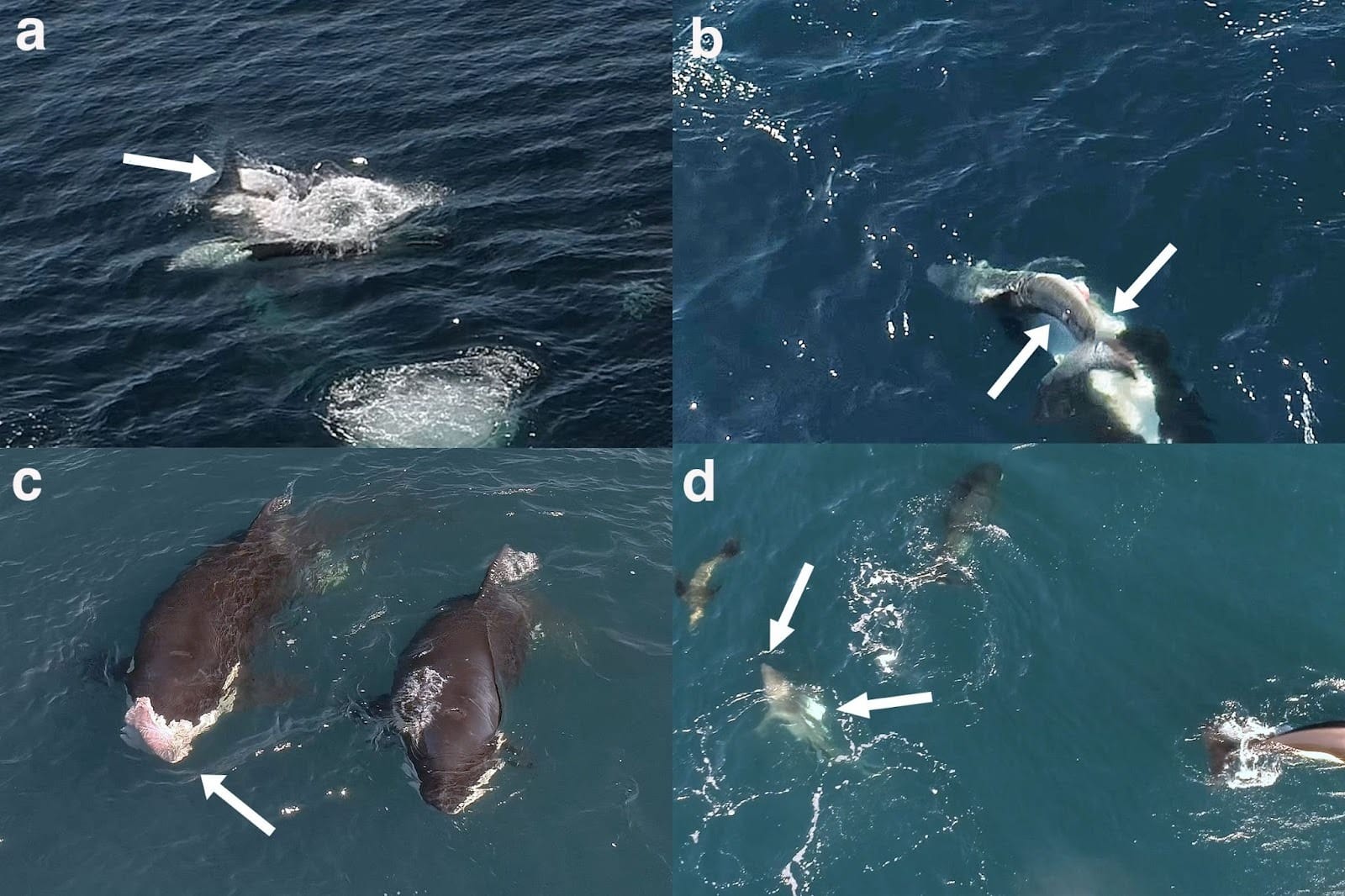Welcome back to the Abstract! Here are the studies this week that took a bite out of life, appealed to the death drive, gave a yellow light to the universe, and produced hitherto unknown levels of cute.
First, it’s the most epic ocean battle: orcas versus sharks (pro tip: you don’t want to be sharks). Then, a scientific approach to apocalyptic ideation; curbing cosmic enthusiasm; and last, the wonderful world of tadpole-less toads.
As always, for more of my work, check out my book First Contact: The Story of Our Obsession with Aliens, or subscribe to my personal newsletter the BeX Files.
Now, to the feast!
I guess that’s why they call them killer whales
Orcas kill young great white sharks by flipping them upside down and tearing their livers out of their bellies, which they then eat family-style, according to a new study that includes new footage of these Promethean interactions in Mexican waters.
“Here we document novel repeated predations by killer whales on juvenile white sharks in the Gulf of California,” said researchers led by Jesús Erick Higuera Rivas of the non-profit Pelagic Protection and Conservation AC.
“Aerial videos indicate consistency in killer whales’ repeated assaults and strikes on the sharks,” the team added. “Once extirpated from the prey body, the target organ is shared between the members of the pods including calves.”

I’ll give you a beat to let that sink in, like orca teeth on the belly of a shark. While it's well-established that orcas are the only known predator of great white sharks aside from humans, the new study is only the second glimpse of killer whales targeting juvenile sharks.
This group of orcas, known as Moctezuma’s pod, has developed an effective strategy of working together to flip the sharks over, which interrupts the sharks’ sensory system and puts them into a state called tonic immobility. The authors describe the pod’s work as methodical and well coordinated.
“Our evidence undoubtedly shows consistency in the repeated assaults and strikes, indicating efficient maneuvering ability by the killer whales in attempting to turn the shark upside down, likely to induce tonic immobility and allow uninterrupted access to the organs for consumption, " the team said. Previous reports suggest that “the lack of bite marks or injuries anywhere other than the pectoral fins shows a novel and specialized technique of accessing the liver of the shark with minimal handling of each individual.”

An orca attacking a juvenile great white shark. Image: Marco Villegas
Sharks, by the way, do not attack orcas. Just the opposite. As you can imagine based on the horrors you have just read, sharks are so petrified of killer whales that they book it whenever they sense a nearby pod.
“Adult white sharks exhibit a memory and previous knowledge about killer whales, which enables them to activate an avoidance mechanism through behavioral risk effects; a ‘fear’- induced mass exodus from aggregations sites,” the team said. “This response may preclude repeated successful predation on adult white sharks by killer whales.”
In other words, if you’re a shark, one encounter with orcas is enough to make you watch your dorsal side for life—assuming you were lucky enough to escape with it.
In other news…
Apocalypse now plz
You may have seen the doomer humor meme to “send the asteroid already,” a plea for sweet cosmic relief that fits our beleaguered times. As it turns out, some scientists engage in this type of apocalyptic wish fulfillment professionally.
Planetary defense experts often participate in drills involving fictional hazardous asteroids, such as the 2024PDC25, a virtual object “discovered” at the 2025 Planetary Defense Conference. In that simulation, 2024PDC25 had a possible impact date in 2041.
Now a team has used that exercise as a jumping off point to explore what might happen if it hit even earlier, channeling that “send the asteroid already” energy.. The researchers used this time-crunched scenario to speculate about the effect on geopolitics and pivotal events, such as the 2028 US Presidential elections.
“As it is very difficult to extrapolate from 2025 across 16 years in this ‘what-if’ exercise, we decided to bring the scenario forward to 2031 and examine it with today’s global background,” Rudolf Albrecht of the Austrian Space Forum. “Today would be T-6 years and the threat is becoming immediate.”
As the astro-doomers would say: Finally some good news.
Big dark energy
First, we discovered the universe was expanding. Then, we discovered it was expanding at an accelerating rate. Now, a new study suggests that this acceleration might be slowing down. Universe, make up your mind!
But seriously, the possibility that the rate of cosmic expansion is slowing is a big deal, because dark energy—the term for whatever is making the universe expand—was assumed to be a constant for decades. But this consensus has been challenged by observations from the Dark Energy Spectroscopic Instrument (DESI) in Arizona, which became operational in 2021. In its first surveys, DESI’s observations have pointed to an expansion rate that is not fixed, but in flux.
Together with past results, the study “suggests that dark energy may no longer be a cosmological constant” and “our analysis raises the possibility that the present universe is no longer in a state of accelerated expansion,” said researchers led by Junhyuk Son of Yonsei University. “This provides a fundamentally new perspective that challenges the two central pillars of the [cold dark matter] standard cosmological model proposed 27 years ago.”
It will take more research to constrain this mystery, but for now it’s a reminder that the universe loves to surprise.
And the award for most squee goes to…
We’ll end, as all things should, with toadlets. Most frogs and toads reproduce by laying eggs that hatch into tadpoles, but scientists have discovered three new species of toad in Tanzania that give birth to live young—a very rare adaptation for any amphibian, known as ovoviviparity. The scientific term for these youngsters is in fact “toadlet.” Gods be good.
“We describe three new species from the Nectophrynoides viviparus species complex, covering the southern Eastern Arc Mountains populations,” said researchers led by Christian Thrane of the University of Copenhagen. One of the new species included “the observation of toadlets, suggesting that this species is ovoviviparous.”

Note to Nintendo: please make a very tiny Toadlet into a Mario Kart racer.
Thanks for reading! See you next week.

